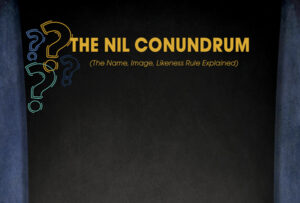The NIL Conundrum (The Name, Image, Likeness Rule Explained)
Click here to read the complete article
70 – January/February, 2023
On July 1, 2021, the National Collegiate Athletic Association passed a policy allowing college athletes to use their name, image, and likeness for compensation, thereby redefining what it means to be an amateur. This included a provision for college athletes to host or engage in clinics or camps for remuneration. Overall, the purpose of this policy is to provide uniform and fair name, image, and likeness opportunities for all student-athletes on a national scale.
The NIL policy outlines additional guidance that requires student-athletes to only engage in NIL activities consistent with the laws of the state where their school is located. Additionally, student-athletes can use a professional service provided for NIL activities, such as an agent, tax advisor, marketing consultant, attorney, or brand management company. Because collegiate equestrians may now engage in activities that they were prevented from previously, and receive remuneration for their name, image, and likeness, this opens up a wide new world of opportunities for personal promotion. However, because many breed associations still have rules prohibiting some of those same activities, this has created a tricky situation.
To start, there are a few different options for collegiate equestrian teams, and the groups are governed by different rules. The NCEA operates directly under the rules and guidelines of the NCAA. The Intercollegiate Horse Show Association (IHSA) can be governed by the NCAA, if sponsored as a varsity sport by the institution. IHSA teams can also be recreation- or club-based. Those would be governed by their own set of rules and regulations, or in connection with incorporated equine partner associations. Some colleges and universities offer both NCEA and IHSA programs with separate teams. This is all to show that while there are major differences between collegiate equestrian teams, there are also some similarities when it comes to governance and policy.
On a larger scale, the United States Equestrian Federation (USEF) has provided specific NIL guidance that outlines the following three requirements for amateur athletes: all NIL actions are permitted under the NCAA’s interim policy; all athletes must remain on a school team’s roster while NIL-related activities take place; and there can be no other breaches of USEF Rules of Amateur Status in connection with NIL activities. This policy is particularly important because of the crossover that can occur between colleges and universities.
No Uniform Policy For Governance
Click here to read the complete article
70 – January/February, 2023











